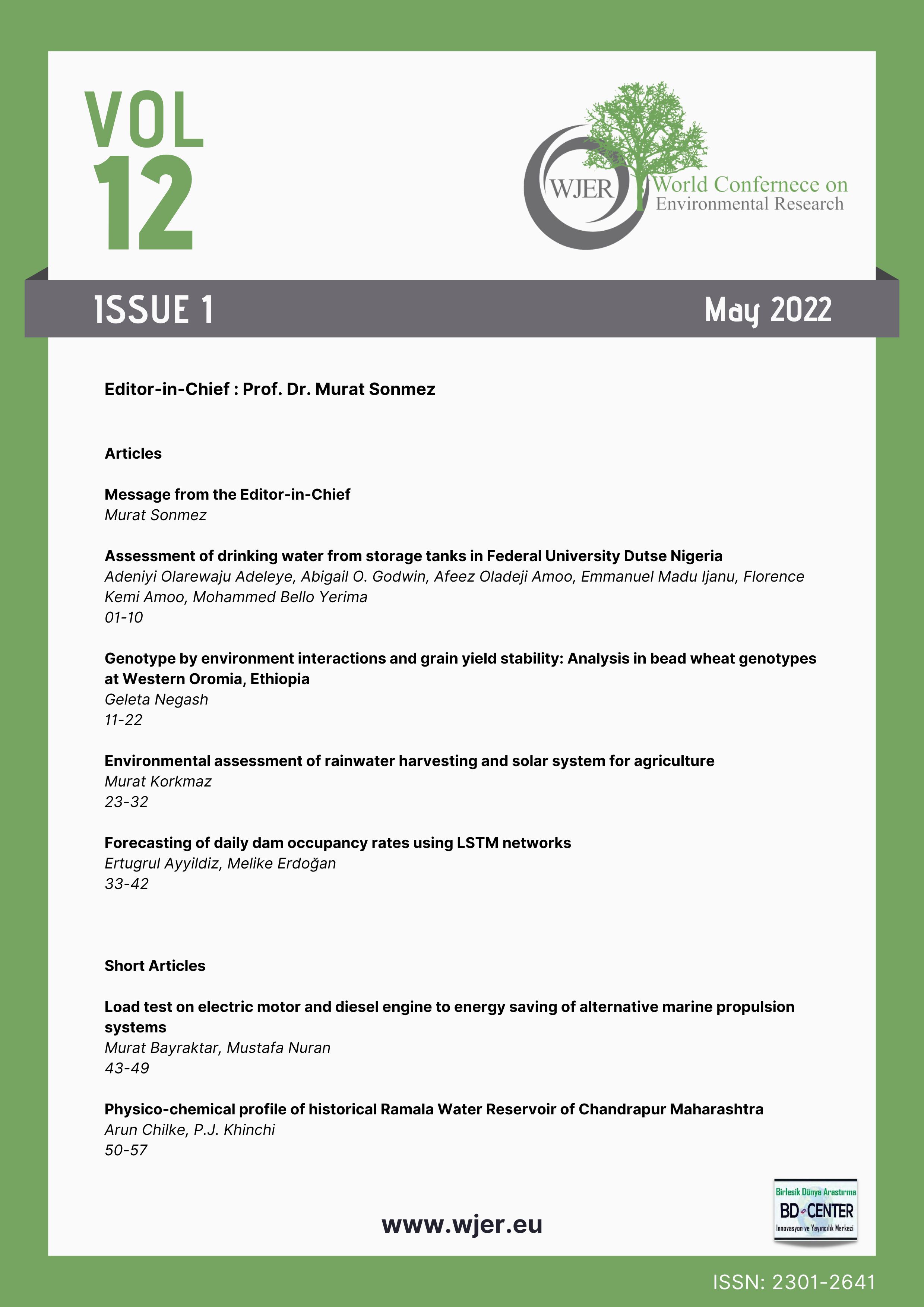Load test on electric motor and diesel engine to energy saving of alternative marine propulsion systems
Main Article Content
Abstract
The global environmental concern and the limited resources of fossil fuels enables the use of alternative and renewable energy sources. International Maritime Organization aims to reduce energy efficiency and emissions from marine vessels evaluating in with regards to the maritime sector. In this context, in addition to the conventional propulsion system, the application of hybrid propulsion system (HPS) and diesel-electric propulsion system (DEPS) comes to the fore. In this study, electric motors, one of the HPS and DEPS equipment, are examined in detail. The purpose of electric motors is to provide or assist the propulsion system and also charge battery systems. In this way, the amount of harmful greenhouse gases generated at low loads and high fuel consumption per unit power are minimized. Moreover, the maintenance intervals are prolonged which reduces costs and increases efficient operating time since the main engine or auxiliary engines of the ship generally runs at optimum loads. In this study, HPS gains are described by perform an application load tests on electric motors and diesel engine in detail. Consequently, this article stated that HPS and DEPS systems will be used more widely in the maritime industry in the future especially on tugboats operated at low loads for most of their operating time. This paper will be a prominent source for researchers and maritime sector stakeholder whose studies are with respect to HPS and DEPS particularly on electric motors.
Keywords: propulsion system, energy efficiency, electric motor, marine vessels
Downloads
Article Details

This work is licensed under a Creative Commons Attribution 4.0 International License.
World Journal of Environmental Research is an Open Access Journal. All articles can be downloaded free of charge. Articles published in the Journal are Open-Access articles distributed under Attribution 4.0 International (CC BY 4.0)
